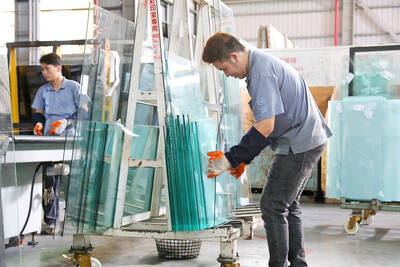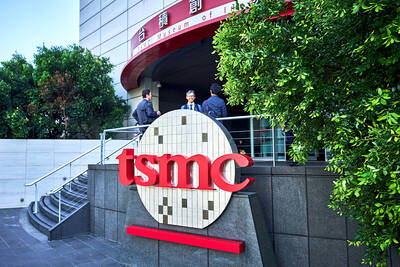Toshiba Corp and Canon Inc said yesterday that flat panel TVs using a new technology called SED (surface-conduction electron-emitter display) will go on sale in the fourth quarter of next year.
The announcement comes as Japanese electronics makers rush to cash in on booming global demand for flat panel televisions. Currently, the two main technologies for flat panel televisions are plasma display and liquid crystal display (LCD).
SED panels have a reputation for delivering clear and vivid images because their light-beaming technology is similar to that for old-style cathode-ray tube TVs.
Toshiba and Canon have shown test SED panels they have been working on, but had not promised a definite date for commercial release.
Initially, company officials had given sometime this year as a target date, but in recent months they have hedged on that promise, raising speculation that Toshiba and Canon could fall behind in the lucrative business.
In yesterday's joint statement, the two Tokyo-based manufacturers said the first stage of mass production would begin in July 2007, and SED TVs would go on sale in the fourth quarter of 2007.
Toshiba and Canon played down the apparent delay in the launch of the products, saying they would be in time for the Beijing 2008 Olympic Games, which are expected to be an opportunity to sell TVs.
"Toshiba and Canon consider the launch of SED TVs to be a major industry milestone, a once-in-50-years historical turning point for the TV industry, comparable to the initial introduction of CRT television," they said.
Although Japanese electronics makers have suffered from intense competition from cheaper Asian rivals over the last several years, the development of new, slimmed-down TVs has provided a new opportunity.
The top companies in LCD and plasma display TVs in global market share are Japanese, such as Sony Corp, Sharp Corp and Matsushita Electric Industrial Co, which makes Panasonic brand products.

CAUTIOUS RECOVERY: While the manufacturing sector returned to growth amid the US-China trade truce, firms remain wary as uncertainty clouds the outlook, the CIER said The local manufacturing sector returned to expansion last month, as the official purchasing managers’ index (PMI) rose 2.1 points to 51.0, driven by a temporary easing in US-China trade tensions, the Chung-Hua Institution for Economic Research (CIER, 中華經濟研究院) said yesterday. The PMI gauges the health of the manufacturing industry, with readings above 50 indicating expansion and those below 50 signaling contraction. “Firms are not as pessimistic as they were in April, but they remain far from optimistic,” CIER president Lien Hsien-ming (連賢明) said at a news conference. The full impact of US tariff decisions is unlikely to become clear until later this month

With an approval rating of just two percent, Peruvian President Dina Boluarte might be the world’s most unpopular leader, according to pollsters. Protests greeted her rise to power 29 months ago, and have marked her entire term — joined by assorted scandals, investigations, controversies and a surge in gang violence. The 63-year-old is the target of a dozen probes, including for her alleged failure to declare gifts of luxury jewels and watches, a scandal inevitably dubbed “Rolexgate.” She is also under the microscope for a two-week undeclared absence for nose surgery — which she insists was medical, not cosmetic — and is

GROWING CONCERN: Some senior Trump administration officials opposed the UAE expansion over fears that another TSMC project could jeopardize its US investment Taiwan Semiconductor Manufacturing Co (TSMC, 台積電) is evaluating building an advanced production facility in the United Arab Emirates (UAE) and has discussed the possibility with officials in US President Donald Trump’s administration, people familiar with the matter said, in a potentially major bet on the Middle East that would only come to fruition with Washington’s approval. The company has had multiple meetings in the past few months with US Special Envoy to the Middle East Steve Witkoff and officials from MGX, an influential investment vehicle overseen by the UAE president’s brother, the people said. The conversations are a continuation of talks that

Alchip Technologies Ltd (世芯), an application-specific integrated circuit (ASIC) designer specializing in artificial-intelligence (AI) chips, yesterday said that small-volume production of 3-nanometer (nm) chips for a key customer is on track to start by the end of this year, dismissing speculation about delays in producing advanced chips. As Alchip is transitioning from 7-nanometer and 5-nanometer process technology to 3 nanometers, investors and shareholders have been closely monitoring whether the company is navigating through such transition smoothly. “We are proceeding well in [building] this generation [of chips]. It appears to me that no revision will be required. We have achieved success in designing